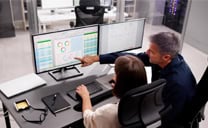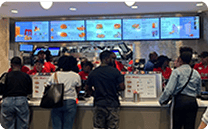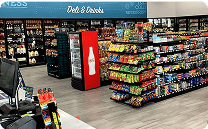In This article
Employee monitoring software encompasses a range of technologies that help employers and managers observe how employees interact with systems, perform tasks, and spend their time during work hours. These tools are used to gain visibility into workflows, maintain standards, and identify areas for improvement in both security and productivity.
Monitoring software can be applied across different work environments—from office settings and remote teams to in-person retail, restaurant, or warehouse operations. Depending on the industry and goals, the focus may vary from time tracking and application usage to task verification and behavioral compliance.
How Employee Monitoring Software Works
Most employee monitoring platforms operate by collecting and analyzing data from user activity, workplace systems, or video footage. The data may include:
- Computer and device usage: Tracking application usage, websites visited, idle time, and keystroke patterns
- Time tracking and attendance: Logging clock-in and clock-out times, breaks, and shift durations
- Task and workflow monitoring: Observing how long tasks take to complete and identifying workflow interruptions
- Surveillance integrations: Combining software data with video monitoring to verify employee behavior, movement patterns, or policy adherence
These systems often include dashboards or reporting tools that allow managers to visualize trends, investigate anomalies, and generate summaries by team, department, or individual.
Key Applications and Use Cases
Employee monitoring software is commonly used in the following ways:
- Retail and hospitality: Observing customer service interactions, monitoring adherence to safety or cleanliness protocols, and tracking point of sale (POS) activity.
- Call centers and customer service: Measuring time spent on calls, response speed, and multitasking behavior.
- Remote work environments: Ensuring employees are engaged during work hours and meeting project deadlines.
- Logistics and manufacturing: Verifying compliance with operational procedures and safety guidelines.
By highlighting inefficiencies or outliers, monitoring tools help businesses take targeted steps to improve overall performance without relying on guesswork or anecdotal reports.
Benefits of Employee Monitoring Software
When implemented thoughtfully, employee monitoring software can:
- Improve transparency and accountability across teams.
- Help identify underutilized time or unproductive routines.
- Strengthen policy and compliance tracking.
- Support coaching, training, and performance improvement.
- Reduce internal risk related to fraud, neglect, or policy violations.
In some cases, it can also help protect employees by providing video or data-backed evidence during disputes, claims, or investigations.
Ethical and Operational Considerations
While monitoring tools can be valuable, they should be implemented carefully to maintain trust and fairness. Businesses should:
- Communicate clearly what is being monitored and why.
- Use the data to support, not penalize, employees.
- Respect privacy laws and industry-specific regulations.
- Apply consistent policies across departments or roles.
Surveillance or monitoring data used constructively rather than punitively contributes to a more transparent and high-performing workplace culture.
Improve Oversight with DTiQ’s Integrated Monitoring Tools
The DTiQ 360iQ platform enables businesses to gain visibility into employee behavior by combining surveillance footage, point of sale (POS) data, and operational insights into one easy-to-use platform. Whether verifying procedures, reviewing task performance, preventing loss, or identifying training opportunities, DTiQ provides the context and clarity needed to manage teams effectively across a single or multiple locations. To learn more, contact us.





























